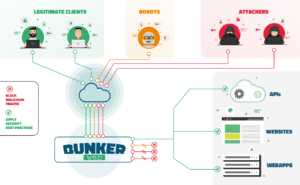A debug shell in early boot stages exposes Linux systems to attacks bypassing full-disk encryption—without breaking the encryption itself.
A newly disclosed vulnerability affecting several major Linux distributions is sparking concern in the cybersecurity community. The issue, uncovered by Alexander Moch and the ERNW security team, allows attackers to bypass full-disk encryption on Linux systems by exploiting a debug shell in the initramfs boot environment. This shell becomes accessible after multiple failed password attempts at boot, potentially enabling an attacker with physical access to inject persistent malware—without needing to decrypt the disk.
While not a software bug per se, the issue highlights a dangerous oversight in hardening practices for physical security.
What Is Initramfs and Why Does It Matter?
initramfs (Initial RAM Filesystem) is a temporary root file system used during the early stages of booting. It prepares the system to mount the real root file system, especially when that root is encrypted.
In systems using full-disk encryption, initramfs prompts the user for a decryption password. However, after entering the wrong password a few times (three in Ubuntu 25.04, for example), some distributions drop to a debug shell intended for recovery—no authentication required.
This recovery mechanism becomes an unexpected entry point for attackers.
The Attack Vector: From Shell to Persistence
The process is disturbingly simple:
- Boot an encrypted Linux system.
- Fail the decryption password multiple times.
- Gain access to a root debug shell.
- Mount a USB with a pre-installed Linux OS.
- Chroot into the target system.
- Modify the
initramfsto include a malicious script. - Wait for the victim to reboot and enter the correct password.
The injected script runs with root privileges after the real root is decrypted—achieving persistence without breaking encryption.
Is This a Vulnerability?
Technically, no. There’s no flaw in the encryption or kernel code. The real issue is a lack of hardening: most distros leave the debug shell accessible and fail to secure or sign the initramfs properly. The attack works because the system behaves as designed, but without considering this edge case.
Neither the CIS Benchmarks, nor NIST’s STIG profiles, nor common tools like Lynis warn about this vector. This makes it a “blind spot” in Linux hardening.
Distribution Comparison (Based on Real Testing)
| Distribution | Debug Shell Accessible? | USB Mount Possible? | Attack Viable? |
|---|---|---|---|
| Ubuntu 25.04 | Yes (after 3 attempts) | Yes | ✅ |
| Debian 12 | Yes (after long keypress) | Yes | ✅ |
| Fedora 42 / AlmaLinux 10 | Via rescue mode | Partial (USB support missing) | ⚠️ Partial |
| openSUSE Tumbleweed | No (boot is encrypted) | No | ❌ |
⚠️ Partial: USB drivers not included in initramfs by default.
How to Mitigate
There are effective ways to block this attack:
1. Disable Emergency Shell Access
- Ubuntu-based systems:
Addpanic=0to the kernel command line. - Red Hat-based systems:
Addrd.shell=0 rd.emergency=halt.
2. Encrypt the /boot partition
Encrypting /boot prevents modification of initramfs without credentials. OpenSUSE does this by default.
3. Use Signed Unified Kernel Images (UKIs)
UKIs combine the kernel, initramfs, and boot loader into a single signed blob, making tampering nearly impossible.
4. Enforce Bootloader Passwords for Booting
Not just for changing GRUB settings—require a password to boot any OS.
Why Is This Still an Issue?
One reason initramfs is not signed is that it’s often generated dynamically on the host system. Distributors can’t pre-sign every possible variant. Instead, system recovery is prioritized over local security—often a necessary compromise for servers and power users.
But this opens the door to attacks when devices fall into the wrong hands.
Not a New Risk—Just a Neglected One
The technique is reminiscent of older attacks such as EvilAbigail and de-LUKS. It doesn’t require modifying firmware or hardware—just a few keypresses and a USB stick.
As Alexander Moch puts it in his detailed blog:
“Secure Boot and full disk encryption are critical—but meaningless if initramfs remains unsigned and debuggable.”
Conclusion
This isn’t a bug. It’s a failure in secure defaults. While remote exploits often make headlines, physical access remains one of the most powerful attack vectors. Enterprises deploying encrypted Linux systems in field environments—kiosks, laptops, edge servers—should revisit their hardening strategies immediately.
Defensive tools and guides need to catch up. Until then, admins must act proactively.
Further Reading:











